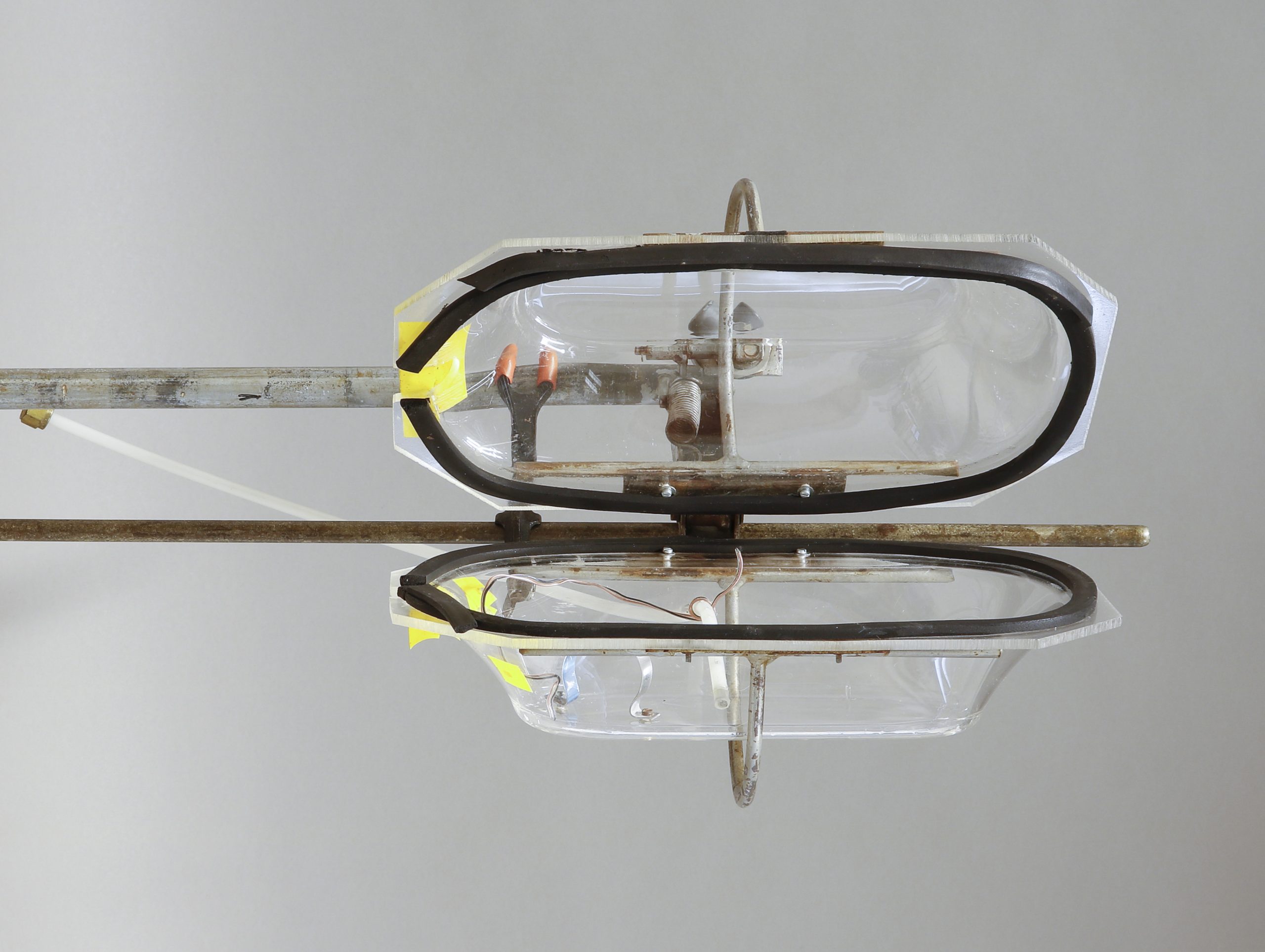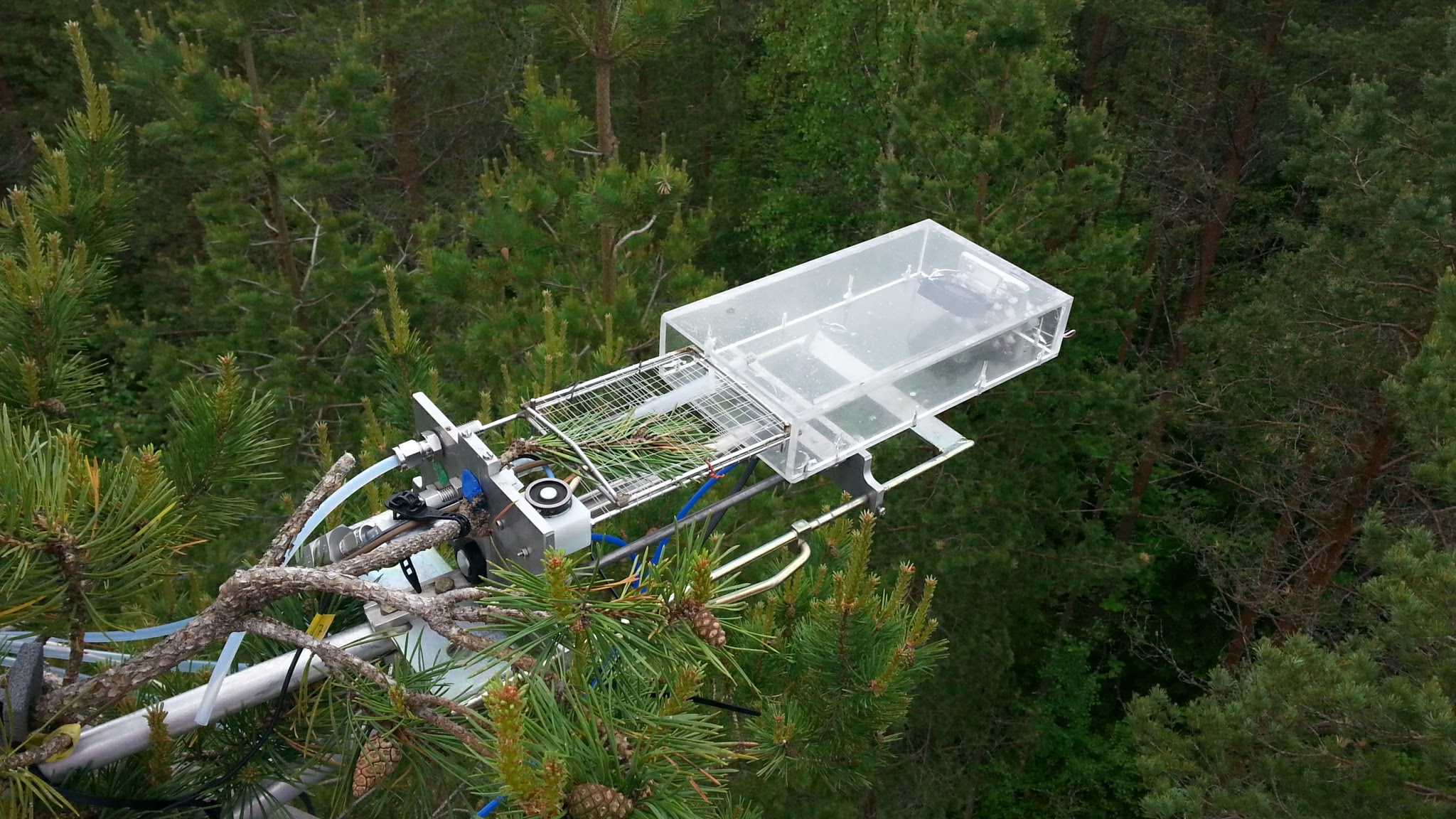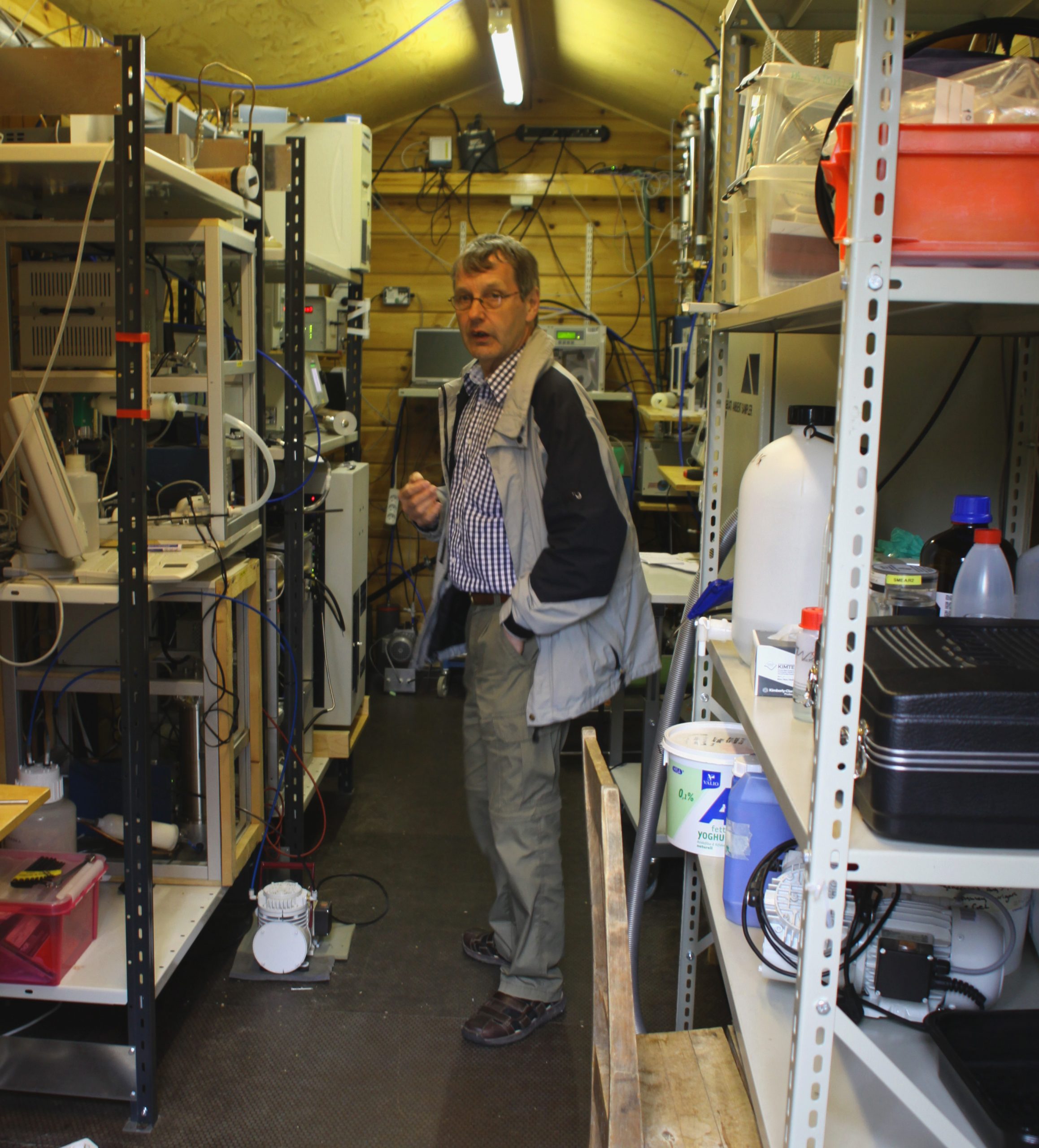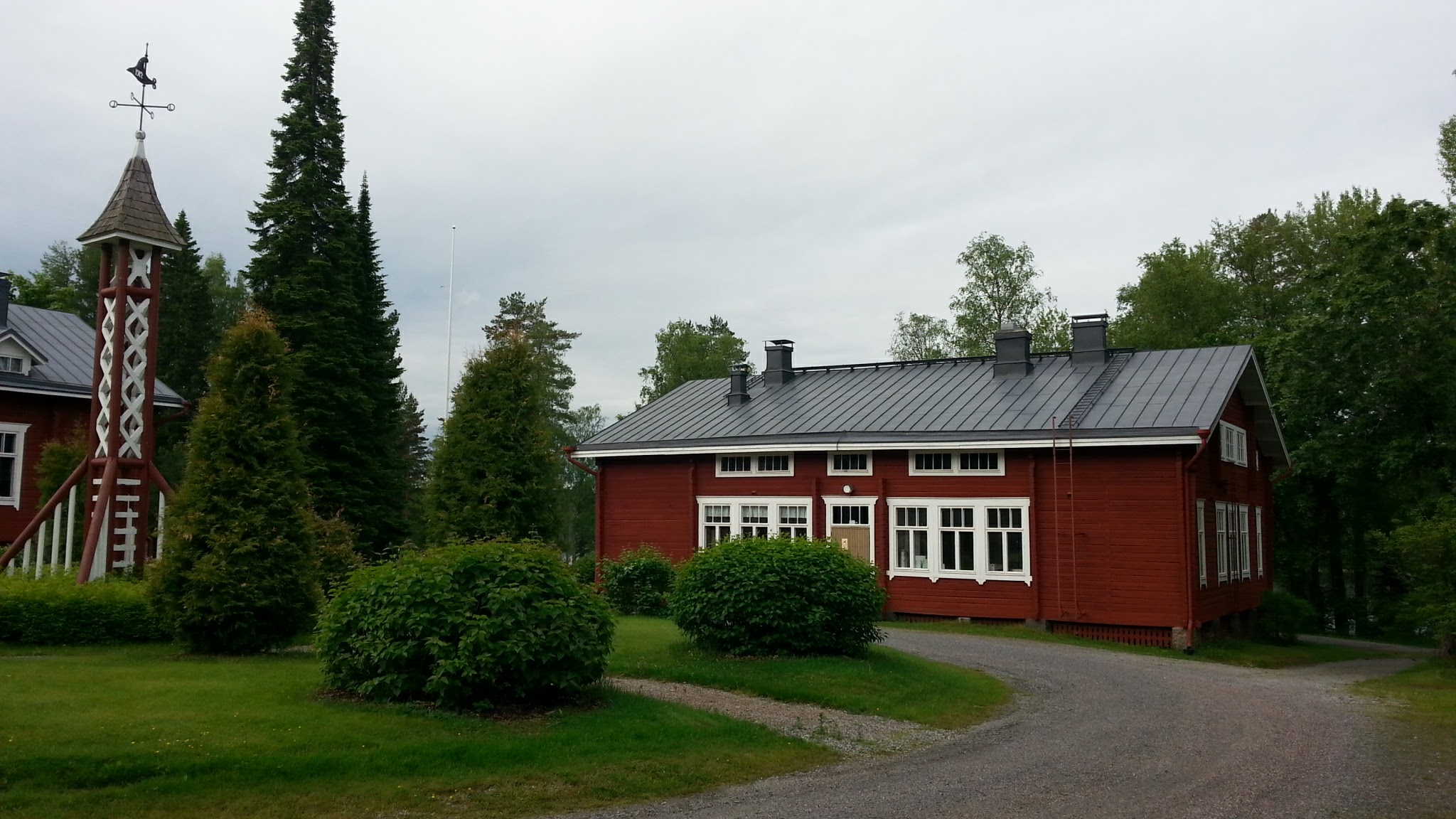Scientists measure natural phenomena and collect samples and specimens using various devices, instruments and containers. To celebrate the approach of summer, our object of the month is a measuring container used in forest research: a cuvette developed by a village blacksmith in Juupajoki in southern Finland.

What on earth is a cuvette?
‘Cuvette’ comes from the French word for a small vessel. This container can vary slightly depending on its use: cuvettes have been used, for example, in laboratories for optical measurements and in fieldwork as the kind of flow-through cuvettes similar to the one presented in this article. In optical measurements, radiation is applied to the sample in the cuvette. The detector in the device interprets the absorption of the radiation by the sample particles. Attached to a flow-through cuvette are supply and outlet tubes enabling the cuvette to be washed and a new sample to be introduced during a run.
In forest research, cuvettes have been used to measure the carbon metabolism of trees, meaning the carbon dioxide that is bound during photosynthesis. Cuvettes have been secured to a tree stem, with a branch, for example, placed inside. During most of the time on the stem, the cuvettes have been open, which means the conditions within them have roughly corresponded to those outside; in other words, the air inside has not become too warm. At regular intervals, the cuvettes have been closed for a measuring sequence, which has changed the gas concentrations within. These changes have allowed researchers to calculate, among other things, the photosynthesis and evaporation rates of the leaves or needles. This automated measuring has enabled detailed assessments of the carbon metabolism of the tree. Thus, cuvettes have helped scientists understand the role of forests in climate change.

Cuvettes made by the Hyytiälä village blacksmith
At the University of Helsinki’s Hyytiälä Forestry Field Station in Juupajoki, cuvettes can be seen both on tree branches and near the ground among the undergrowth. The selection of cuvettes used in Hyytiälä is based on decades of development work by Toivo Pohja, a now-retired metalworks specialist. Cuvettes similar to our object of the month have been used since the 1970s, and quite a few forest researchers have become acquainted with them in field courses and used them in their research.
Toivo Pohja was a village blacksmith and amateur musician living in Juupajoki. In 1975 he was on a gig at the Hyytiälä Forestry Field Station and met forest researchers who showed him the forest measuring equipment they used. “There was a glass-fibre box and a helluva lot of tubes and cables in the forest,” Pohja said in an article in the ET-lehti magazine in 2020. He had always been interested in building gadgets and now began to clear up the mess the scientists had made, with theoretical assistance provided by Professor Pertti Hari. Pohja proved to be such a skilled builder of measuring stations that he was given the chance to install them in not only Hyytiälä, but also the Värriö Subarctic Research Station in Lapland. In 1996 the Faculty of Agriculture and Forestry granted Pohja the title of honorary doctor for his work for the benefit of science.

Hyytiälä Forestry Field Station
In 1910 the government ceded land it owned in Juupajoki, close to the village of Hyytiälä, to be used in the training of forestry students. The students were initially accommodated in houses in the neighbouring areas and the Kallenautio inn, but later moved to buildings completed at the forestry station in 1912; these buildings remain in use today. The courtyard area formed by the old buildings, representing the Finnish art nouveau style, has been designated by the Finnish Heritage Agency as a built cultural environment of national significance. The buildings were designed by senior director Ernst Theodor Granstedt and architect Carl Ricardo Björnberg. The accommodation for forestry students is the largest of them, alongside which are a kitchen building with a large dining room, the home of the station caretaker, and a few storage and maintenance buildings. In the centre of the courtyard is a dinner bell, not included in the original plans but built at the proposal of the station supervisor, University Forester Benjamin Helander. Further from the courtyard is the director’s residence named Pilvilinna (‘Cloud Castle’) after the expression ‘Pilvi nousee’ (‘A cloud on the horizon’) used on the building site when the director came to inspect it.
More buildings were completed in the area in the 1950s and 1970s, and in 1995 the SMEAR II (Station for Measuring Ecosystem–Atmosphere Relations) was erected there. SMEAR is part of several international measurement networks. Its research forest stand is used to measure the ecophysiology and growth of trees, the water balance of the soil, weather observation variables, solar radiation and its reflection, material flows, the concentrations of substances, aerosols in the atmosphere and the accumulation of forest litter. This forest stand has a 128-metre measuring mast and several measuring towers that are level with or above treetops.

From the making of an industrial society to the development of atmospheric research
From the late 19th century, Finland used its forests to transform itself into a modern industrial society. Teaching and research in forest science gained a firmer foothold when higher education in the field was relocated in 1907 from the Evo Forestry Institute to the Imperial Alexander University of Finland. At the same time, the first professorships were established in the field, specifically in forest management and forest surveying. In 1924 the department of agriculture and economics was separated from the Faculty of Philosophy and upgraded into an independent Faculty of Agriculture and Forestry to increase the efficiency of forestry through scholarly research and education.
After the Second World War, forest research has increasingly sought to explore changes taking placing in the environment, while social tension between the economy and nature has increased. From the 1960s, tree biology and plant productivity in line with environmental conditions, or production ecology, began to be investigated with careful measuring and modelling. In the 1980s research concentrated on topics such as the acidification of the environment caused by air pollution. Research in aerosol physics and forest ecology reached a high level at the University of Helsinki in the 1990s. At present, Finnish research on atmospheric science drawing on forest vegetation analysis is considered world-leading.

This object will be included in the museum’s new core exhibition, to be opened in the University of Helsinki Main Building in autumn 2023.
Jaana Tegelberg, Head of Collections
Translation: University of Helsinki Language Services
Sources cited and consulted
Halonen, Tero. Maasta ja puusta pidemmälle. Helsingin yliopiston maatalous-metsätieteellisen tiedekunnan historia. I osa. Hyödyn aikakaudesta vuoteen 1945. Vammala 2008.
Hari, Pertti; Korpilahti, Eeva; Pohja, Toivo; Räsänen, Pentti K. A field system for measuring the gas exchange of forest trees. Silva Fennica, 24 (1): 21‒27. 1990.
Hatakka, Heimo. Itseoppinut seppä Toivo Pohja – Pikkukylän moniosaajaan luottavat ilmastotutkijat ja Ruotsin hovi. Article in ET magazine, issue 17/2020. https://www.etlehti.fi/artikkeli/ihmiset/itseoppinut-seppa-toivo-pohja-pikkukylan-moniosaajaan-luottavat-ilmastotutkijat-ja [accessed on 12 April 2023]
Hyytiälä. https://www.helsinki.fi/fi/tutkimusasemat/hyytialan-metsaasema/historia [accessed 27 March 2023]
Leikola, Matti; Kallio, Minna. Hyytiälä. Helsingin yliopiston metsäasema v. 1910–1990. Jyväskylä 1990.
Kyvetti. https://fi.wikipedia.org/wiki/Kyvetti [accessed 27 March 2023]
Leikola, Matti. Metsätieteet. In: Tommila, Päiviö (ed.). Suomen tieteen historia 3. Luonnontieteet, lääketieteet ja tekniset tieteet. Porvoo 2000.
Otavan iso tietosanakirja, osa 5. Keuruu 1958.
Paaskoski, Leena. Herrana metsässä. Kansatieteellinen tutkimus metsänhoitajuudesta. Suomalaisen Kirjallisuuden Seuran Toimituksia 1170. Helsinki 2008.
Pohjonen, Veli. Fotosynteesin kyvettimittauksen kehittäjä – Developer of couvette photosythesis measurement. Blog entry: Värriön luontopäiväkirja – Varrio Nature Diary. http://varrio.blogspot.com/2018/05/fotosynteesin-kyvettimittauksen.html [accessed 27 April 2023]
Puttonen, Pasi. Information obtained in person and via email in 2022 and 2023.
Sahi, Liisa (ed.) Helsingin yliopiston metsäasema Hyytiälä 75 vuotta. Helsinki 1985.
